Bring Back Home Economics — 'I'm 53 And Still Don't Know How To Live'
Nobody ever taught me how to cook, much less live.
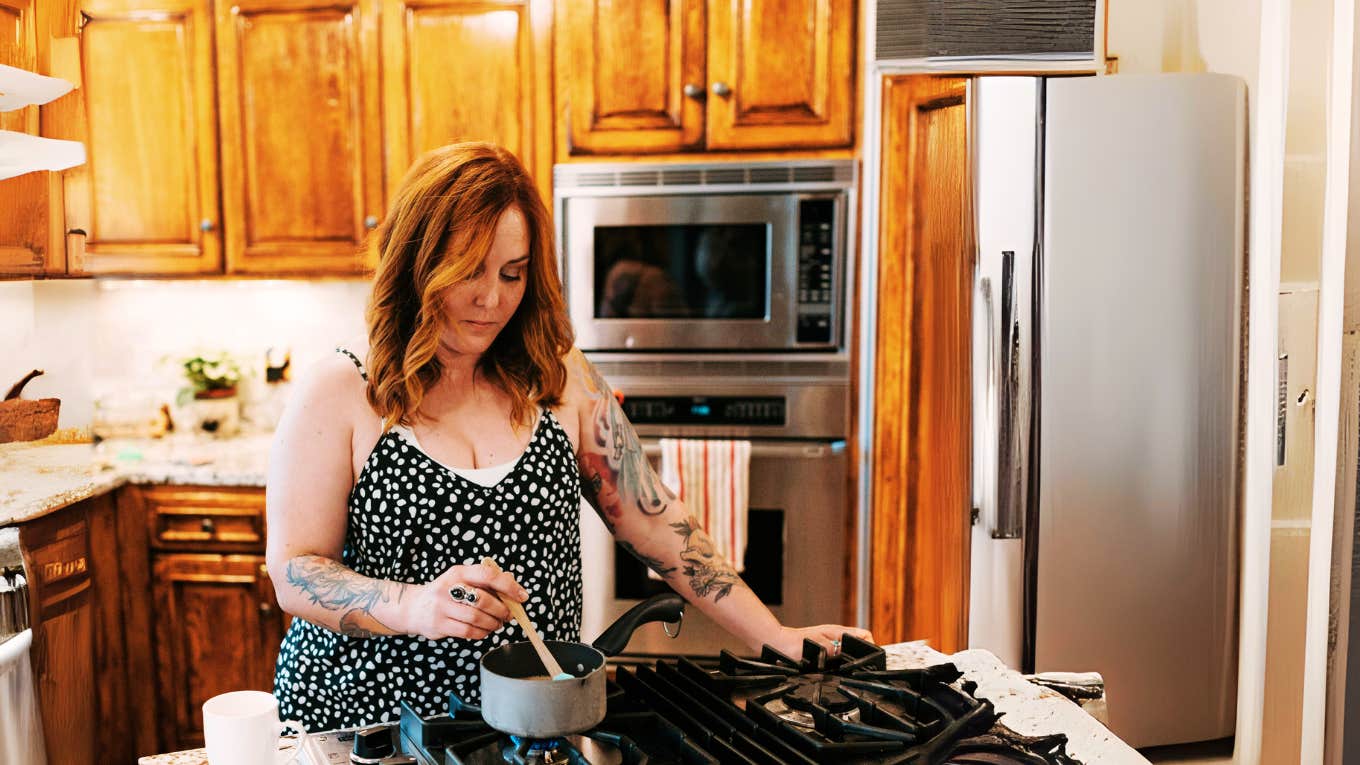 Sandra Seitamaa | Unsplash
Sandra Seitamaa | Unsplash I’m throwing out too much food. You are, too. I’m essentially a functioning human being (low-frequency functional, but still), so I know I can’t be the only one.
This makes me feel bad because what type of idiot in massive credit card debt wastes food? Worse, it feels like an insult to the abundance of the world, the abundance of America, the abundance of modernity.
My grandmother never used the “but there are starving children in Africa” trope to get me to finish my plate, but she did look at me sadly when I wouldn’t finish my breakfast and say, “During the war, we could only dream of French toast.” This didn’t land when I was five, but somehow, it’s haunting me now.
Now, I’m in a cycle of wasting food and then lying in bed berating myself about it, trying to come up with solutions. I never can because no one taught me how to live.
I watched my mother cook dinner every night, but never joined to her to learn how, and she never invited me. I watched my grandmother dip slices of bread in an egg mixture — and somehow decided that she had invented French toast — but aside from making cookies with me once in a while, she taught me nothing.
I’m not sure why I missed out on this, I’m not sure what they were thinking, or whether everyone raised kids this way in the 1970s when feminism was at an inflection point.
I’m not sure if all of GenXers waste food the way I do. It’s not something we talk about. Here’s how it happens for me.
On Sunday, I’m filled with dread about the coming week but also a sliver of positivity: “Today, I will cook for the week!” I think. Then the fever dream continues, and I tell myself, “I will eat what I make throughout the week, and I will even bring my lunch to work!” I believe myself when I decide these things.
Sunday night always starts strong, and last Sunday was no exception. I made these magical olive oil-braised garbanzo beans and this incredible zucchini thing. I made a box of couscous and wolfed down a bowl of this concoction while watching TV. True bliss.
I even tossed some leftover broccoli into the garbanzo beans. I congratulated myself for this, because this was true home economics, stretching everything and wasting nothing. Dinner probably cost $3. Take that, French Toast Grandma.
I remained pretty solid on Monday. I had the day off work, and I was running around the city, so I paid for lunch somewhere (can’t remember where, alarming). But when I got home, I ate my garbanzo beans/zucchini/couscous, loved it, and congratulated myself again.
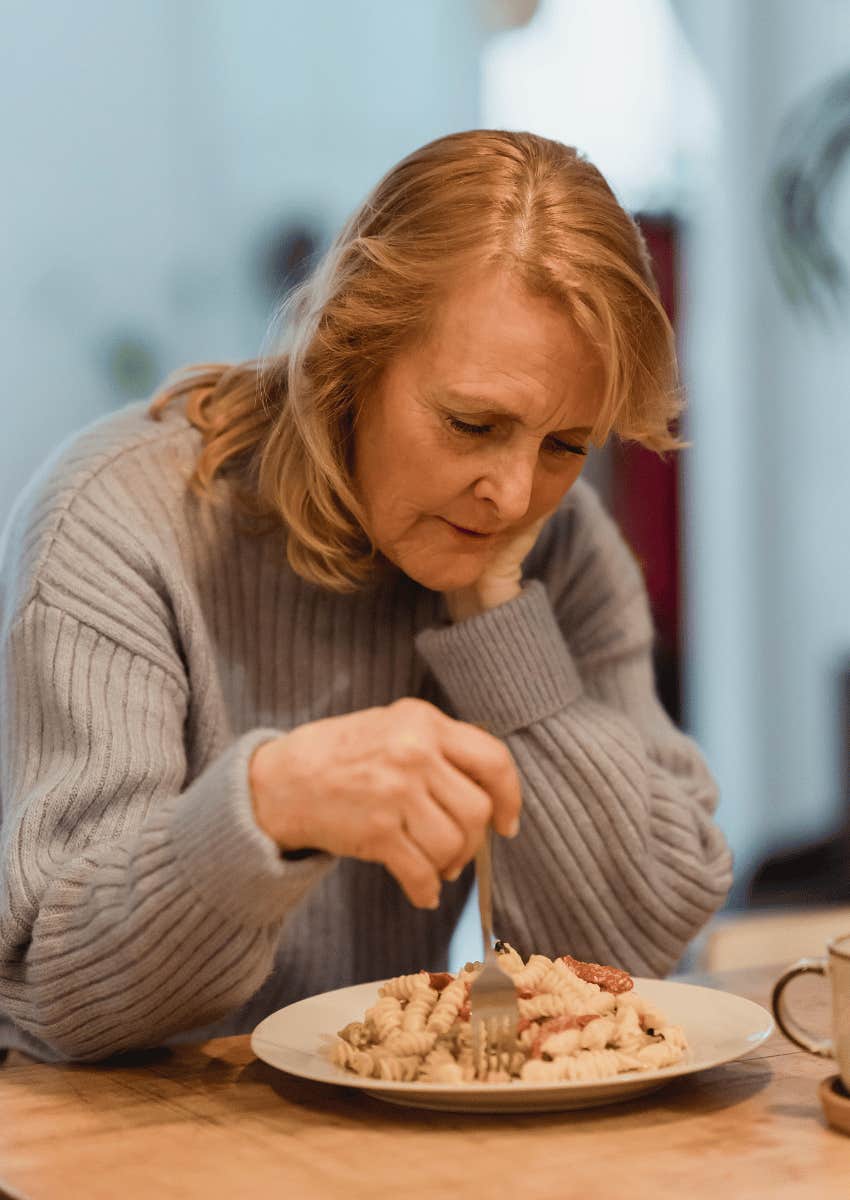 Teona Swift | Pexels
Teona Swift | Pexels
But on Tuesday, I started to crack. When I woke up, the French Toast Grandma side of me insisted that I pack a lunch for work. But I just didn’t want to.
So I raced around in the morning in a fake frenzy, acting as if I were late for work and that I “forgot” to bring my lunch. It’s strange to gaslight yourself this way — I wasn’t late for work, I didn’t have to rush — but I couldn’t face the idea that I am so undisciplined that I would rather pay 1 million dollars for avocado toast in downtown Los Angeles than eat the same thing three times in a row.
But that night, I stopped my nosedive and yet again ate garbanzo beans and zucchini for dinner. It was less delicious by now, but I reminded myself that I see Instagram influencers who prep food for every meal, putting sad little unseasoned pieces of chicken breast in one tiny section of a glass container, apple slices in another, and some almonds yet another and they eat this stuff all week, no deviation.
I reminded myself that my dad had the same breakfast for my entire life, an English muffin with Monterey jack cheese and butter until his doctor told him to knock it off. Then it was an English muffin with hummus for the next two decades, no deviation.
And there was my friend’s boss who brought the same lunch to work every single day, a sandwich made of brown bread and gjetost cheese. If they could do that, I could certainly eat this for a fourth time, especially if I chased dinner with some Lindt chocolate truffles.
But on Wednesday, it all fell apart. Spectacularly. I had lunch plans with one of my bosses, and we went to Water Grill, where she sucked down oysters from a seafood tower and ate lobster tail and dover sole drenched in butter.
This was a stumble I could have recovered from by going home and eating leftovers again, but I just couldn’t do it. So I spent $40 on getting ramen delivered and ate it all in one sitting. No leftovers to at least make it two meals.
After spending about $200 on one day’s worth of food, the rest of my garbanzo beans and zucchini languished in the fridge. And there they remain, today, more than a week after I made them. I can’t bring myself to eat this concoction again, and yet I can’t bring myself to throw it out.
I don’t want to be this person. I want to be my dad. I want to be the other guy who eats the same cheese sandwich every day.
Sadly, this is not the only way I screw up. I screw up in so many other ways. I’ll read a recipe that calls for miso. I’ll buy miso, make the recipe, and feel a thrill. Then, the miso lingers in my fridge for months until it becomes a tub of penicillin. I’ll throw it out.
I know, I know. I should just find several recipes that call for miso. But see, what no one tells you is that those other recipes also call for one-time ingredients that I would rarely use: almond flour, ginger, you name it. Then those ingredients linger, too, reminding me that I am an idiot.
Right now I have a jar of sesame paste I’ve never opened. I have no idea why I bought it.
Sometimes I go to Costco. This may seem to be an odd choice for a single gal, but I believe there must be a Costco hack for those of us cooking for one; I just haven’t found it. I usually buy 12 cans of garbanzo beans and tell myself that I’ll roast them, make vegetable curries, and use them in salads.
And this does happen, eventually and sometimes. But I also inevitably leave with a fuzzy blue dog bed, a body pillow, a crocheted sweater, 6 pairs of socks, and a three-pack of sports bras that don’t fit anyway. That adds up to $300 for garbanzo beans.
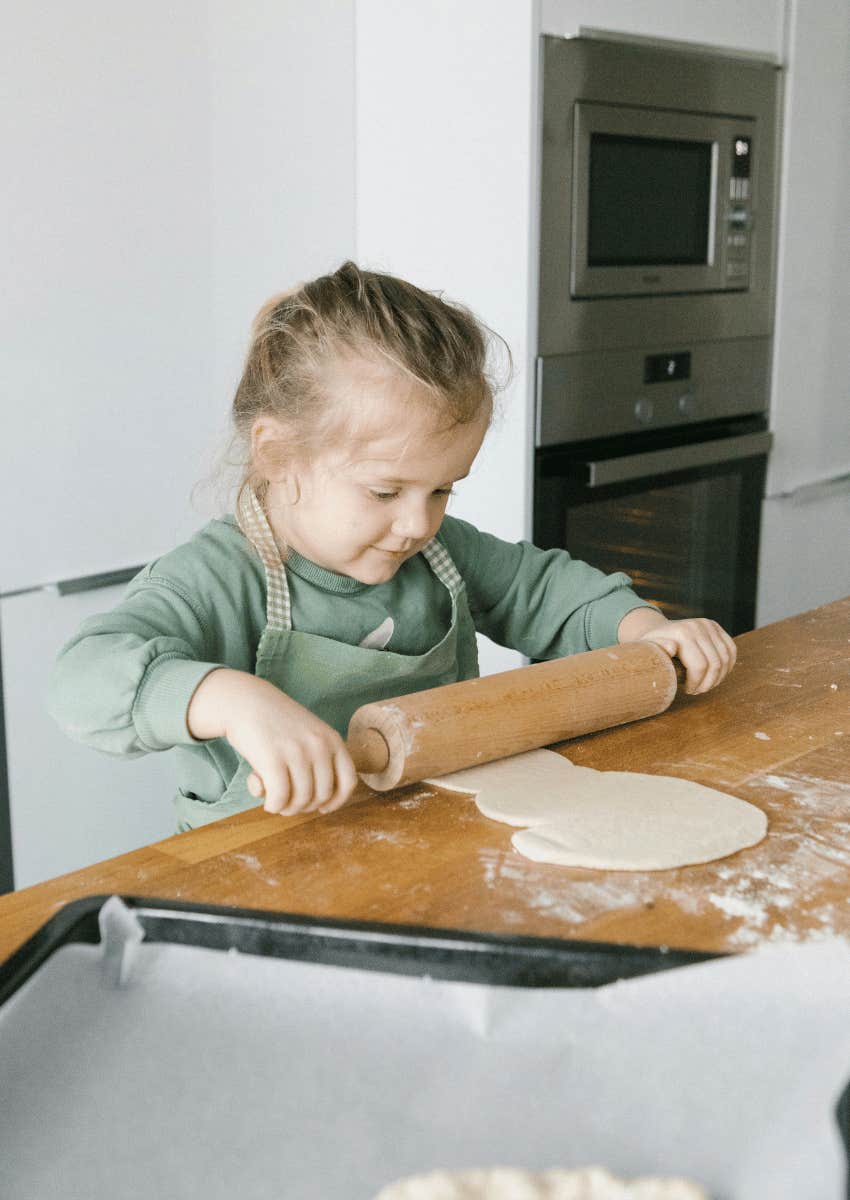 Meruyert Gonullu | Pexels
Meruyert Gonullu | Pexels
I’ve spent years trying to avoid these pitfalls, secretly wishing I could have taken a home economics class.
Even as a kid, I craved something like this. By eight years old, I was drawn to questions about how to nest, organize, and cook. I’m not the only little girl who wanted to play house, but I was pretty intense.
I read the Little House on the Prairie books for the details about eating biscuits with leftover bacon grease, making a mental note that was one way to use “the whole animal” even though I didn’t know that exact phrase. (This could also have been in The Red Pony by John Steinbeck, my memory is fuzzy).
I read Island of the Blue Dolphins and kept going back to the part where the main character, a young girl alone on an island, learned to spearfish. When we went on field trips to the California missions, I tuned everything out other than how they baked tortillas.
My second-wave feminist mother tried to exorcise this from me, or at least didn’t encourage it. In eighth grade, they did offer a home economics class, but my mother put her foot down: I would be taking woodworking, no discussion.
At best, Mom was well-meaning but confused. (I still have the tiny bookshelf I made in woodworking class, so that’s nice). Perhaps she wanted to save me from being someone’s housewife, a wolf trap of womanhood that second-wave feminism was still trying to chew out of in 1982.
At worst, my mother was using me to play out her feminist fantasies, like forbidding me to try out for a drill team, claiming that it was a gateway to cheerleading. But she was a fraud: while she took me to ERA marches and cried when it didn’t pass, she never worked, and later I found out that she knew absolutely nothing about her finances.
The elegant irony here is that somehow, my mother, despite her feminist cosplay, was fantastic at home economics. She was frugal, and I don’t remember anything languishing in the fridge. She used to whip something up called Phil’s Diner Vegetable Stew — which at the time probably cost about $5 to make, lasted three days for a family of three, and was delicious in its simplicity. But somehow, this skill was not something she thought I needed.
As I got older, not getting this education at home, I started to find my way. As a college student, I mocked all the homemakers that came before me by ironically buying vintage lunch boxes and wearing thrifted rayon dresses that surely belonged to a homemaker in the 1940s with combat boots trying to find my place in the world of domesticity.
After college I dropped the charade, and earnestly became a fangirl of Martha Stewart, hoarding her magazines. This didn’t quite fit, because Martha’s ethos was not “how to make leftovers last a week” but rather “here’s how to wrap a burlap ribbon around a mason jar.”
More confusingly, I was living on the Lower East Side of New York, trying to be a bohemian painter and Martha didn’t fit into that vibe. But in the early 1990s, she was the only option. I just didn’t know how or whom to ask for help
I thought that home economics classes had faded from curricula because this was just something you figured out by yourself. But for some reason, no one else was talking about how hard it all was.
I had some wins. When I was living in a drafty loft with my boyfriend who also wanted to be an artist, I somehow figured out how to make a black bean soup that was so flavorful that he would bear hug me every time I made it. But that seems like a dream now; I can’t even remember how I did it, although I do remember squeezing oranges in at the end. I think a lot of cumin was involved.
But I hit bottom when, in my twenties, I tried to make risotto by cooking rice with a can of Campbell’s soup. (In case you were wondering, this doesn’t work). Then I served it to my father. I thought I was being frugal, I thought I had it figured it all out.
I’ll never forget the look on his face: a mixed bag of confusion that included but was not limited to 1) how much money he had just paid for my liberal arts education and 2) whether he or my mother had forgotten to teach me how to cook and what else they might have forgotten to teach me and 3) sadness.
Years passed after the Risotto Incident, and I got slightly better at cooking. But I still desperately wanted to be taught, to be handed a textbook, or even just some scribbled notes on how to run a household.
Later, I bought old church cookbooks at flea markets, thinking they might have some secrets written in the margins. They didn’t. I unironically bought a book at one of those flea markets published in 1901 called Perfect Womanhood. It sits on my bookshelf now; I’m afraid to crack it open because I might take it seriously.
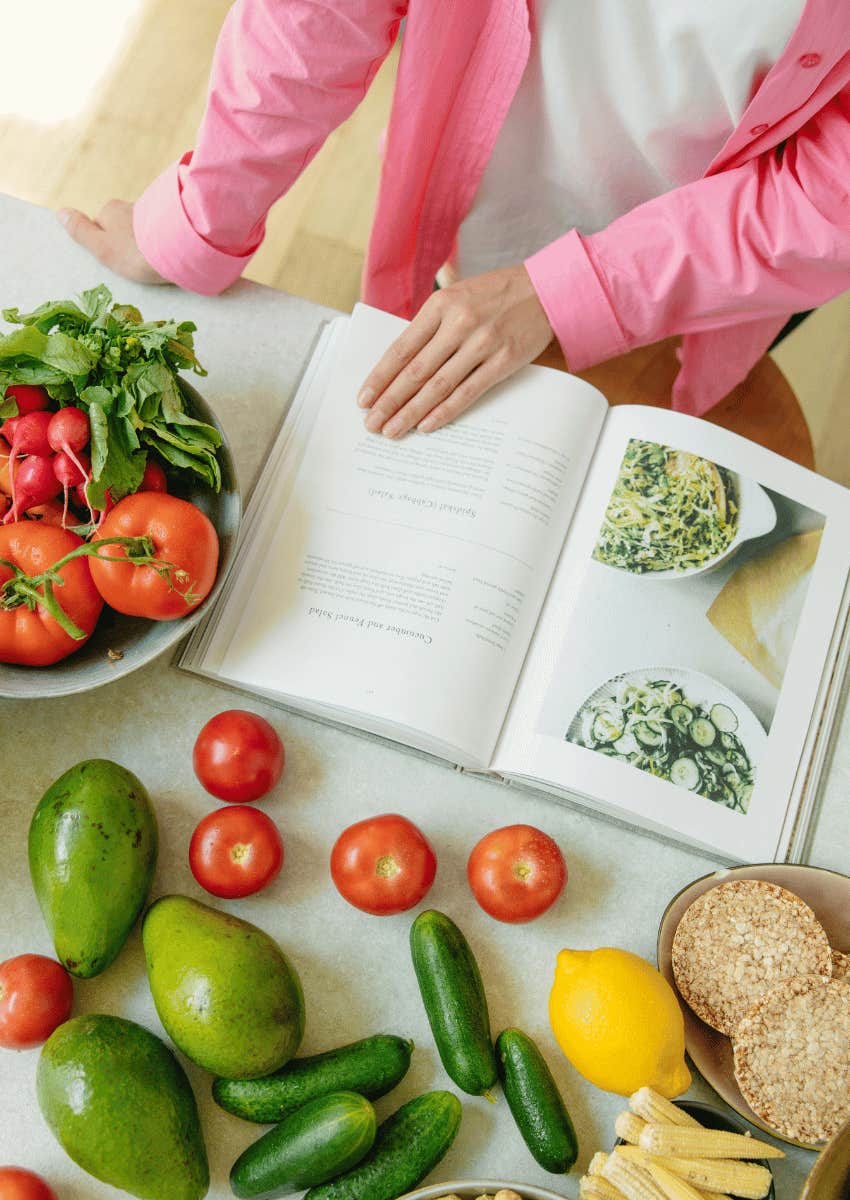 Yaroslav Shuraev | Pexels
Yaroslav Shuraev | Pexels
When I was 39, now living in Los Angeles with a mishmash collection of cookbooks and stacks of Real Simple and Sunset magazines, I started dating Matthew, a history professor.
After months of surprisingly good intimacy and good conversation, before things descended into hell, I admitted how badly I wanted to take a home economics class while we lay in bed discussing whether to spend money on going out to breakfast. I told him about my obsession with Little House on the Prairie, Island of the Blue Dolphins, and the California missions. Matthew stroked my hair and said, “You know, home economics used to be a major in college.”
This blew my mind. After asking him way too many questions about this, Matthew sent me the ad to encourage women to major in home economics in college. In college. As a major. Sure, this 1955 video is propaganda to keep women at home and away from the boardroom. But I admit I was thrilled.
Patriarchal propaganda or not, it confirmed everything I suspected, namely that adulting is actually hard.
It requires classes and professors. Running a household — whether with a spouse and children or alone — is complex and not intuitive. We need help. We need to be taught. There’s math.
Based on a very superficial, soft Google, home economics no longer appears to be a major anywhere and instead has been replaced with something called “family sciences.” I thought about taking a deep dive into figuring out whether these classes were different in name only, but I was roasting cauliflower in yet another optimistic stab at making a week of meals and was too tired to investigate further.
But no matter what the name is, I need to be taught. Now I wander around the digital landscape, virtually walking up to Instagram influencers and asking “Are you my mother?” in an effort to find someone, anyone, who will let me in on the secrets.
Right now I’m obsessed with Jesi Rae Aviles’ Instagram account, in which Aviles describes herself as a “lower middle-class wife and mom” and posts content about cooking for a family of seven.
She throws huge hunks of meat on something called a Blackstone — some sort of large cooking surface I’ve never seen anywhere other than a diner — and packs her hubby’s lunch by using leftover plastic bags, shoving in bottles of energy drinks and Tupperware full of air fryer wings.
I, as a single woman who lives with her dog, can learn absolutely nothing from Aviles. And yet I can’t look away. Somehow Aviles just knows how to do this. Who taught her? Does she ever have leftovers? Does she throw out food? If not and she cooks the perfect amount for each meal, what happens if someone wants seconds?
The mind boggles, but there’s also a counter-argument: it’s not that hard at all, and I do know how to do it. It’s just a question of discipline, the same discipline my dad and the brown-bread-cheese-sandwich guy had.
The discipline to accept boring, the discipline to stand up at the kitchen counter for just five minutes longer and stir something rather than flop down on the couch to watch shows, the discipline to find several recipes to use those so-called one-time ingredients. I know I should just make myself a tuna fish sandwich rather than order Uber Eats if I really can’t stand to eat garbanzo beans for a fourth time.
I have the information, but I think I’m craving something else; something ancient about family and recipes passed down for generations. I’m craving the tricks that mothers whisper to their daughters — at least in books and movies, maybe no one gets this in real life — and then those daughters whispered to their daughters. Or sons, blah blah, etc, and so forth.
Because it will make me feel lonely when I scrape zucchini into the trash. I’m missing the feeling of optimism that comes from knowing how to roast a chicken and then use its carcass to make stock, because that stock will be used for a soup that will comfort someone else, maybe a whole family. I do indeed know how to roast a chicken and make stock, but I wish I had learned how from a human and not the Internet.
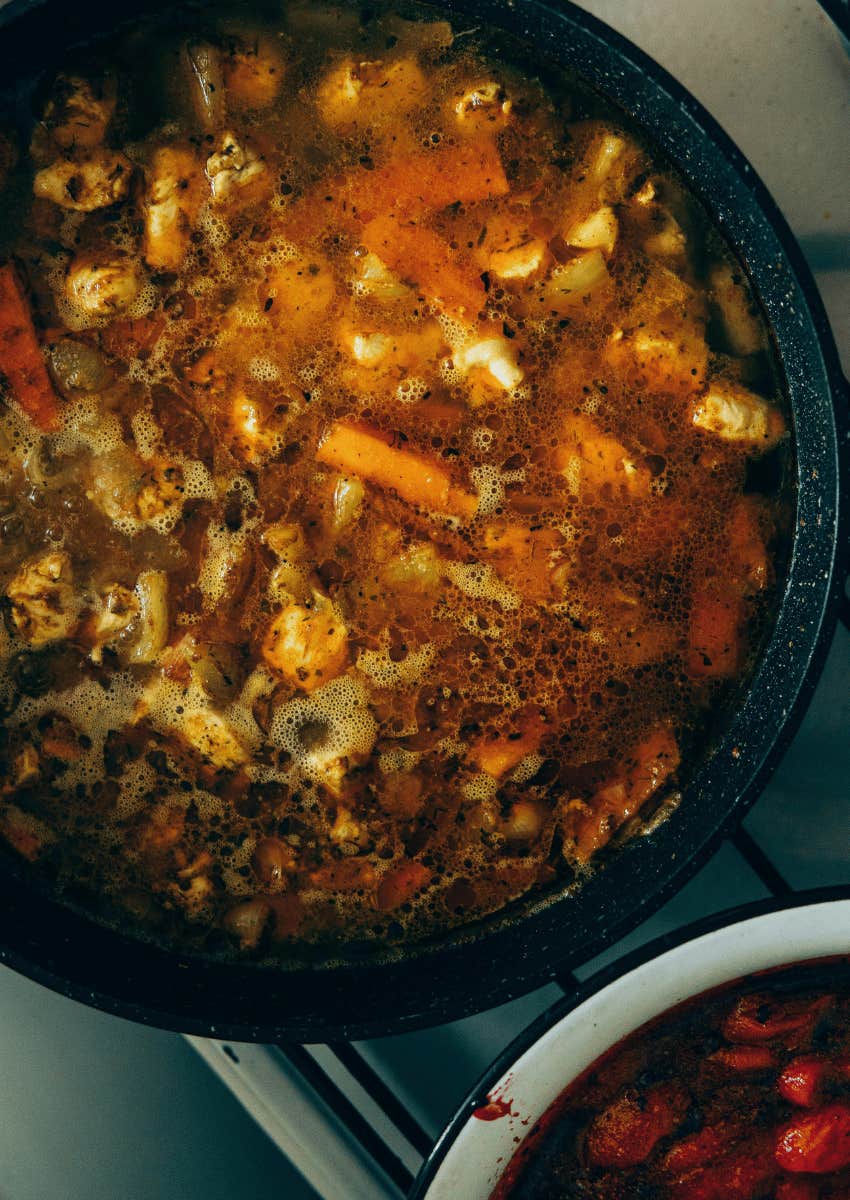 Dmitriy Zub | Pexels
Dmitriy Zub | Pexels
One small comfort is that I do have the recipe for Phil’s Diner Vegetable Stew*, somehow my mother did give it to me along the way.
I share it with you now:
- 6 carrots, sliced (no need to peel!)
- 1 stalk celery, sliced
- 2 large zucchini, sliced
- 4 yellow crookneck squash, sliced
- 3 onions, diced
- 4 cups chicken broth (or vegetable!)
- 1 tsp salt (or more, to taste!)
- pepper to taste
- 6 cloves garlic
- 5 bay leaves
- 2 28 oz cans of diced tomatoes
- 2 28 oz cans of tomato sauce
Combine carrots, celery, onion, broth, salt, pepper, garlic and bay leaves. Cook until vegetables are tender, about 20 minutes. Add tomatoes and their liquid, tomato sauce, zucchini and squash. Simmer until the squash is tender, about 30 minutes. Remove bay leaves (or not) and serve with bread.
Bring back home economics. Bring back a world in which we teach each other how to live.
Adeline Dimond (not her real name) is a federal attorney who writes about all the things she's not allowed to say at work.

